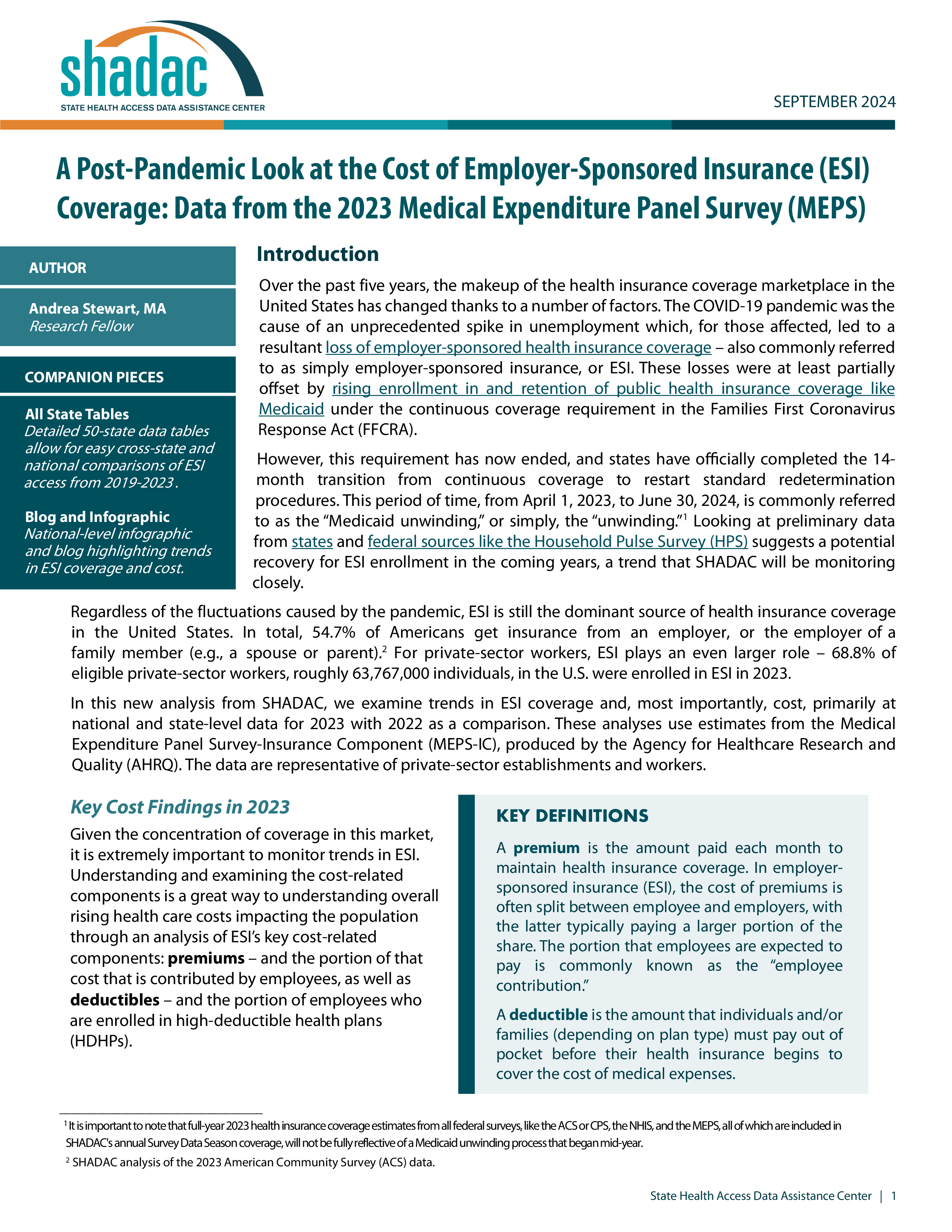Percent of annual premiums contributed by employees
Measure Overview
Health insurance plans typically charge a monthly fee called a “premium.” In the case of employer-sponsored insurance (ESI), the cost of a health plan premium is split between the employer and the employee. The share of ESI premiums paid by employees across single and family insurance policies has increased over the past decade. As a result, employee contributions to ESI premiums represent a growing share of workers’ incomes. Tracking employee contributions to ESI premiums is a key step in understanding and comparing the cost of ESI plans and addressing financial barriers to coverage, even for those who seem to have ready access to or the option of enrolling in a health insurance plan.
State Health Compare provides annual state-level measures of employee contributions to premiums for single plans and family plans. These measures reflect data collected in the Medical Expenditure Panel Survey – Insurance Component (MEPS-IC).
Generate customized graphics using this data by selecting one of the options below.
Related Products

A Post-Pandemic Look at the Cost of Employer-Sponsored Insurance (ESI) Coverage: Data from the 2023 Medical Expenditure Panel Survey (MEPS)
Despite pandemic-related decreases, ESI still represents the primary source of health insurance coverage for a majority of the U.S. population (54.7%, or approximately 182.3 million people in 2023). This new report from SHADAC researchers uses estimates from the Medical Expenditure Panel Survey-Insurance Component (MEPS-IC), produced by the Agency for Healthcare Research and Quality (AHRQ), to look at national and state-level ESI data in 2023 with 2022 as a comparison.
